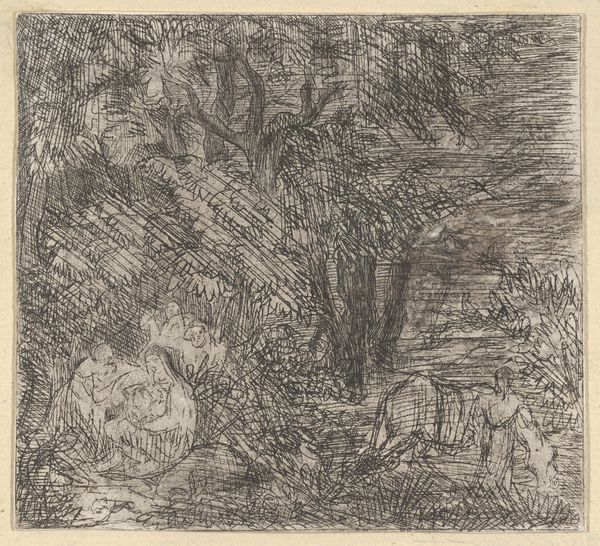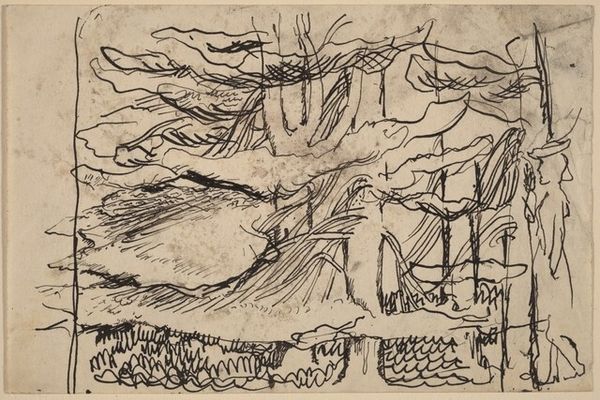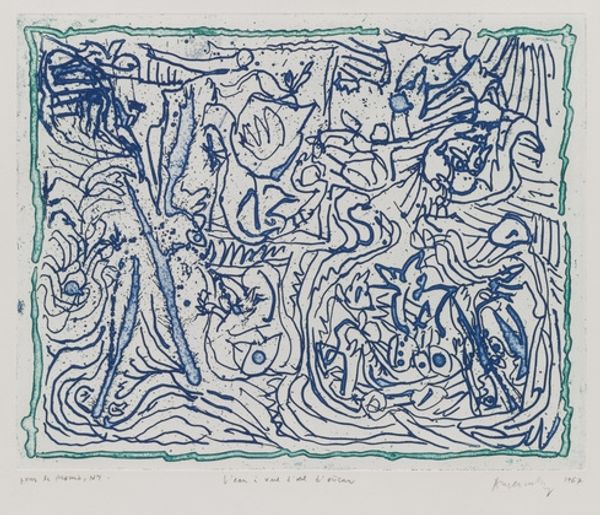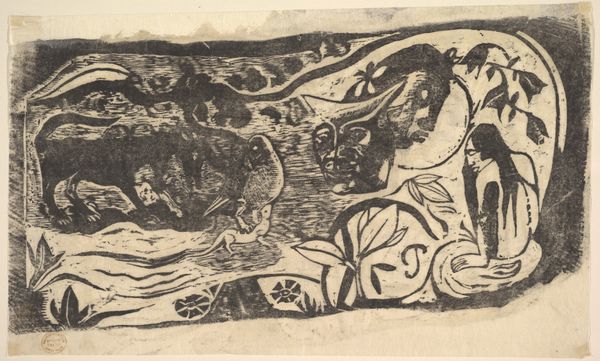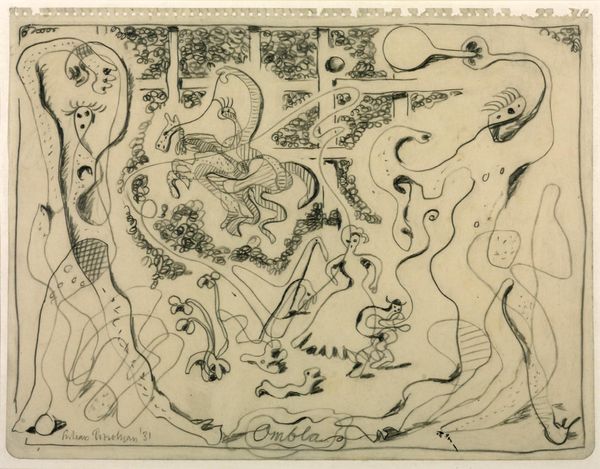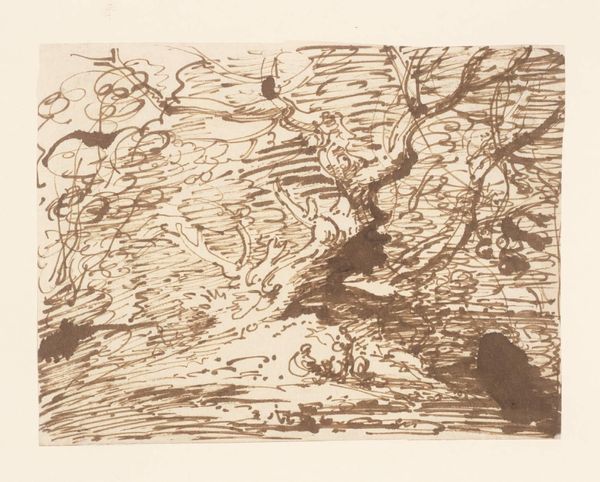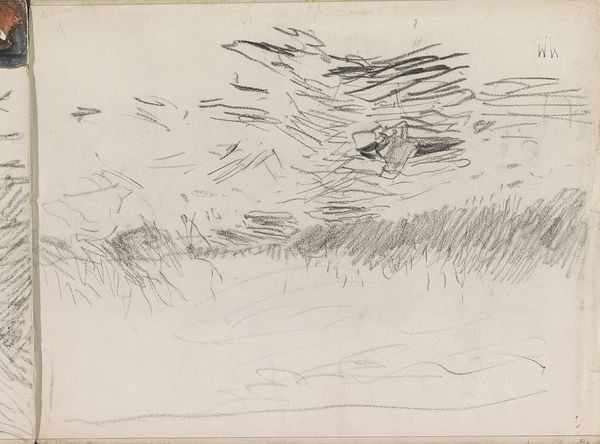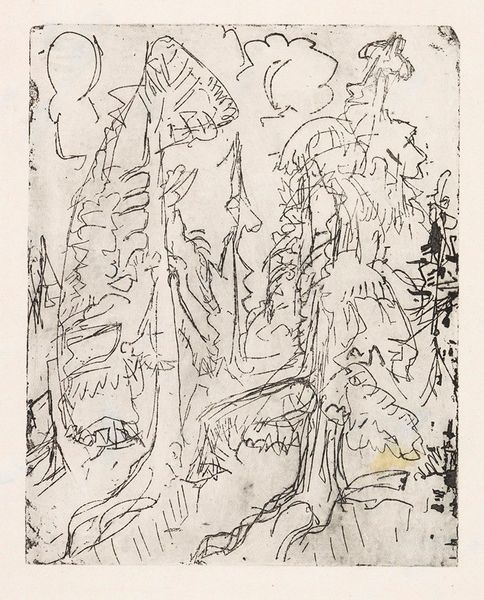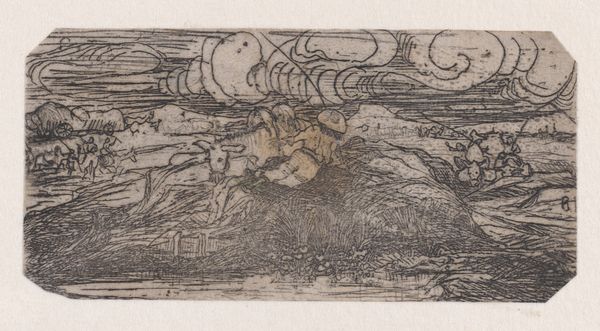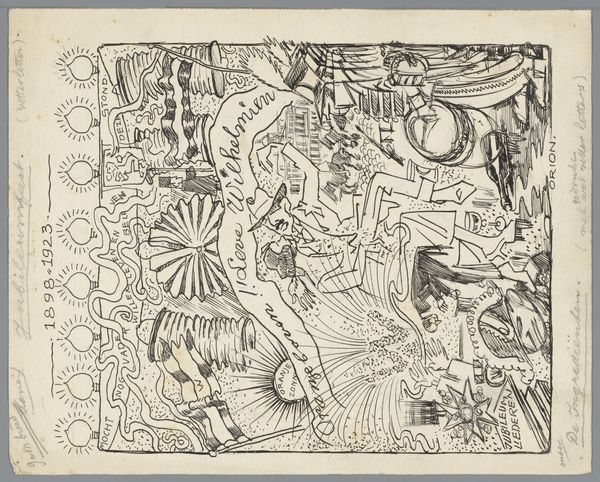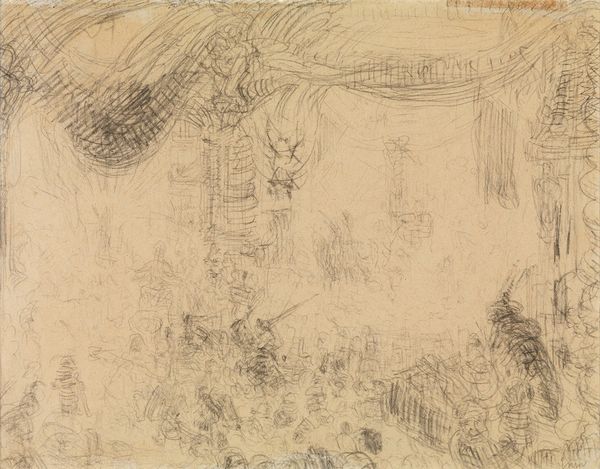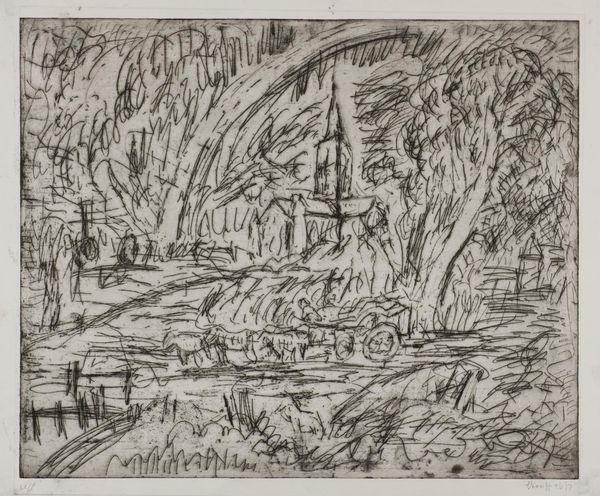
drawing, etching, ink
#
drawing
#
ink drawing
#
narrative-art
#
pen sketch
#
etching
#
landscape
#
ink
#
symbolism
Copyright: Public Domain: Artvee
Curator: Ensor’s "The Cataclysms," created in 1888 using etching and ink, feels…apocalyptic. Editor: Chaos leaps out. I immediately register a dense layering of marks—everything's teeming and almost vibrating with frenetic energy. Curator: Absolutely. And looking closely, it seems to depict an annihilation scene. On the horizon line, a town is razed under a hail of divine beams erupting from anthropomorphic clouds. Below, thrashing waves threaten tiny ships carrying refugees. It feels rooted in late 19th-century anxieties. The spectre of revolution, class warfare, and rapidly transforming urban landscapes created widespread anxieties and anxieties related to faith in societal order. Editor: That reminds me of imagery in the Book of Revelation, particularly in its visualization of God unleashing plagues and punishments on earth. Even the sun and moon grow dark. Do you think Ensor was consciously alluding to this in his representation of this landscape's demise? Curator: It's plausible, though Ensor was keen on satire and poking fun at tradition and dogma. I find it useful to remember the context of burgeoning Belgian socialist and anarchist movements around that time, which, like many apocalyptic movements, were highly critical of prevailing societal injustices. Ensor's sardonic nature makes me hesitant to read the subject as exclusively religious. Editor: I see what you mean. But these images do carry potent cultural weight. Consider how even secular movements adopt apocalyptic framing when pushing for drastic political change, often deploying symbolic acts of destruction and rebirth. Curator: A fair point! Ensor was a unique symbolist who borrowed from everywhere to explore ideas around political revolt and social reform, I'm very pleased to observe this kind of symbolic depiction of political change within an intersectional narrative. Editor: And this is a stark reminder that even now, we continue to wrestle with these types of symbols – grappling with anxieties and hopes about civilization's fate. Curator: Precisely! It highlights art's capacity to speak to enduring concerns across different cultural moments. Editor: Agreed. This work invites consideration beyond art history and extends to our ongoing social and political dialogues.
Comments
No comments
Be the first to comment and join the conversation on the ultimate creative platform.
